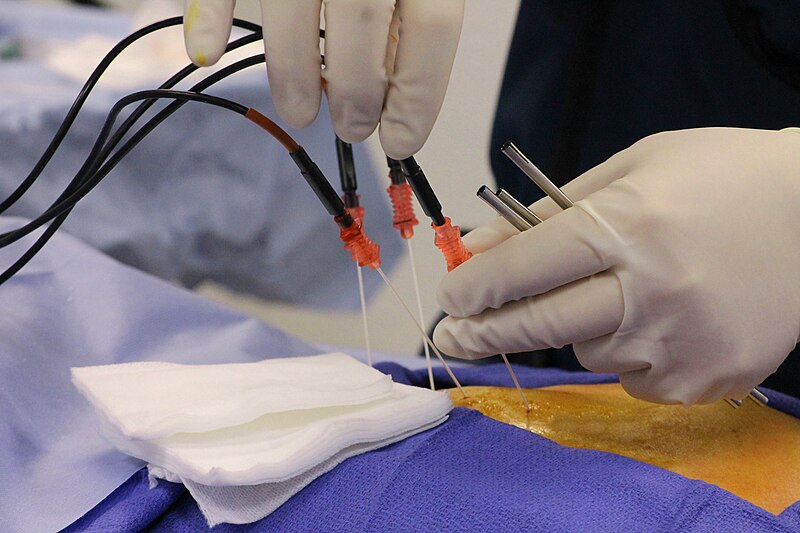
A radiofrequency neurotomy is used to destroy the medial branch nerves with heat lesions, stopping pain signals from reaching the brain. The procedure treats pain that has occurred due to injury, arthritis, or other degenerative changes.
What is it?
Minimally invasive procedures, specifically Radiofrequency neurotomies, are used to treat pain from arthritis, degenerative changes, or injury. Also known as radiofrequency ablation, heat lesions are created on certain nerves to interrupt the signals of pain to the brain. There are two subtypes of this procedure; medial branch neurotomies, and lateral branch neurotomies. Both subtypes block pain signals originating from different joint areas. About 30-50% of patients who undergo this procedure experience significant pain relief in the years following the procedure.
What should I do to prepare?
Patients will be asked not to chew tobacco or chewing gum on the day of their procedure. Refraining from participation in any strenuous activities is recommended. You will also be asked not to use perfume/lotion/deodorant on the day of the procedure. If there are medications a patient has to take before the procedure, they must be taken with a clear liquid.
What happens during the process?
Radiofrequency ablation/neurotomy is minimally invasive, and typically uses a local anesthetic and mild sedation. The procedure begins with the patient receiving intravenous (IV) sedation, and lying face-down on a procedure table while their back is cleaned and the local anesthetic is injected. The physician will then use X-ray guidance to guide a radiofrequency needle along the targeted nerves, first numbing them, and then preparing to create the lesion. Radiofrequency waves are generated to heat the tip of the needle, causing a lesion on the nerve that disrupts the nerve’s ability to send pain signals. Repetition of this process is possible for multiple nerves. The procedure, taking about 30-90 minutes, does not require a hospital stay and patients are free to return home immediately afterward.
What are the risks and potential complications?
Some complications and risks do exist for this procedure. Most common is the side effect of a mild sunburn-like pain, which is typically minor, but in 3-5% of patients can be extremely severe. Other potential complications include pain or discomfort around the area of the procedure, numbness of skin around the treated area, worsened pain due to a muscle spasm in the surrounding vicinity, permanent nerve pain, allergies or reactions to anesthetics, and infection.
Disclaimer:
All GlobeHealer Site content, including graphics, images, logos, and text, among other materials on the site are for educational purposes only. This content is not intended to be a substitute for professional medical advice, and you should always contact your physician or qualified health provider for information regarding your health. Information on this site regarding the overview, diagnosis, and treatment of any kind should be looked at, in addition to the advice and information of your health care professional. Do not disregard medical advice or delay seeking treatment or medical advice due to information found on the GlobeHealer site.
If there is even the possibility that you may have a medical emergency, seek treatment, call your doctor, or call your local emergency telephone number immediately. GlobeHealer does not endorse being the first line of communication in case of emergency and does not endorse any specific test, physician, facility, product, procedure, opinion, or other information that is or may be mentioned on this site or affiliated entities. Reliance of any and all information provided by GlobeHealer, its employees, affiliations, others appearing on the Site under the invitation of GlobeHealer, or visitors of the site is solely at your own risk and is not the responsibility of GlobeHealer.
Image Source: https://commons.wikimedia.org/wiki/File:Pain-Doctor-Radiofrequency-Ablation-Procedure-7_copy.jpg
